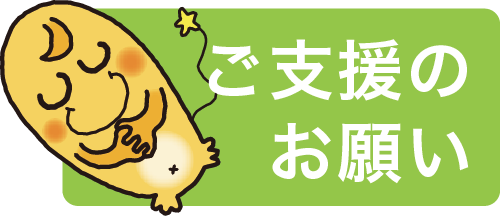| ‘Always Be Together’ – supporting the daily lives of owners and pets Workshop Organizer’s Message: Secretariat for the International Conference on Animal Care Kobe (ICAC KOBE 2012) The Great Hanshin-Awaji (Kobe) Earthquake was the disaster that created a ‘restoration commemorative project’ dubbed the ‘Live Love Animals Festival’, a day of happiness in which owners and their dogs could enjoy a day out together. |

Hiroyuki FUJITA
(Editorial Director, Nikkei National Geographic Inc. )
I am sure you know the American magazine, “National Geographic”. It was first published in 1888 and has now been translated into 33 languages including Japanese with 40 million monthly readers. The 2011 December issue carried a report about the people of Fukushima who had been evacuated due to the nuclear accident following the Great East Japan Earthquake. As well as the main article, the background stories were also very intriguing.
There was a picture of some people barbecuing with a ‘shichirin’ (earthenware brazier) on the street of Okumacho, a city designated as a hazard area. “Having a barbecue in hazard suits?” I thought to myself, “It can’t be true!” Then I took a closer look at the picture and noticed some dogs lured by the smell of the grilled meat around the shichirin. In fact, it was a picture of people who were part of a rescue operation for pets left behind after their owners had been evacuated. To take such a picture, the photographer must have been greatly moved by his encounter with Japanese people trying to save animals without regard for their own safety.
The National Geographic is known for its powerful pictures and clear commentary about wild animals collected from all over the world. Recently however the magazine has included more and more articles that look at pet animals. So it is now a media presenting new human-animal relationships from various viewpoints (such as the human-pet animal relationship) and the validation of cross-fertilization from a genetic point of view.
The underlying idea is changing away from “conservation” towards “coexistence.” To support this idea what we can do is face the reality of humans and animals. The first step is, for a while, to put aside our concept of always putting our highest priorities on ‘efficiency’ – a dominating concept in Japanese society – and listen to the stories of doctors fighting on the front lines to learn about the reality. Then we can give deeper consideration to the issues as they relate to us directly.
Animal Rescue Activities in Ishinomaki Following the Great East Japan Earthquake
Toshinori ABE, Director, Abe Animal Hospital, Ishinomaki City
![]()
On March 11, when an unprecedentedly large earthquake struck Miyagi Prefecture, the Ishinomaki area was jolted by a quake measuring over 6 on the Japanese scale, which was followed 30 minutes later by the arrival of a huge tsunami. As a result, all the lifelines were cut off and the area was completely devastated. Around 73% of the urban area was inundated by the tsunami and almost all of the private small-animal veterinary clinics were flooded. In the two cities and one town that make up the area, the disaster left 4,796 people confirmed dead and a further 1,160 people missing. Moreover, in proportion to the human losses, many animals also died or suffered due to the disaster. Because most of the industry and housing in Ishinomaki is located in the coastal areas, many companies, factories and homes were completely destroyed and many people lost their jobs, homes and families.
After the earthquake struck, each veterinary clinic evacuated its hospitalized animals and then the veterinarians attempted to rescue animals that had taken refuge in the neighborhood evacuation centers. At many evacuation centers, families and pet animals were placed together in the same large rooms (many of these were classrooms). Volunteer veterinarians made visits to these evacuation centers where they carried out consultations and administered free treatment.
Miyagi Veterinary Association established the Ishinomaki Animal Rescue Center based on an agreement signed with the Prefectural and City Governments. The Center was operated with the cooperation of Sendai Veterinary Medical Association, Nippon Veterinary and Life Science University, and volunteers from all over Japan. In the middle of September, when all the temporary housing in Ishinomaki was completed, the animals kept at the Center were sent back to their original owners or else to foster families, and the Animal Rescue Center was closed down on October 6.
Also, from May 15, a program of activities was started up under the ANN Project to help animals living in temporary housing. Conducted by JAHA training instructors, these activities aim to stem problematic behavior among animals living in temporary housing, such as barking, biting, etc., and towards building an animal network.
From the Site of the Great East Japan Earthquake, In Order to Survive Together with Animals…
Yoko ABE, Veterinarian, Abe Animal Hospital, Ishinomaki City
![]()
The Great East Japan Earthquake was an unprecedented disaster. Among owners who live together with their pet animals, and who regard them as beloved family members, there must be many who know first-hand how hard it is to survive together with a pet when society automatically places top priority on saving human life in times of disaster.
This time the huge earthquake that initially struck was quickly followed by a devastating tsunami. Facing the imminent danger many pet owners were forced to flee their homes with nothing but their pets and the clothes they were wearing. Then they had to take shelter at an evacuation center. Under the circumstances, some pet owners actually said that they would rather have been engulfed by the tsunami together with their pets.
Fortunately, in Ishinomaki City, almost all of the evacuation centers allowed people to evacuate with their pets accompanying. For many pet owners who had lost their normal daily lives in an instant, being together with their pets was one of the few things they still had left. Within the evacuation centers, the animals attracted the attention of the children and their smiles. Furthermore, many other people were comforted by the warmth and gentleness of having pets around, as well as the owners themselves. All in all, the presence of these pets has been a major source of encouragement for the embattled community and part of the emotional support needed in the reconstruction efforts.
Later, when the city authorities announced there would be nothing to prevent the keeping of pets in temporary housing, many pet owners moved into such accommodation together with their animals.
Observing the drastic change in circumstances for people who had to first flee the disaster, then had to join an evacuation center before moving into temporary housing, I strongly sensed the importance of owners becoming aware that they should not only work to raise their pet as a member of the family but also to be a member of society. Owners need to have a good understanding of their pets’ habits and behavior, and equip these animals with an understanding of the rules and manners needed for living as part of the greater human society so that they can be loved by everybody. Owners should develop bonds of absolute trust with their pets so that the pet will feel they can live at ease and comfortably, safely and securely, wherever they are with their owners. So, for better preparation towards potential disasters, I sincerely hope that many more pet owners will come to realize the need for animal training and socializing education. This can be extremely useful to survival efforts.
Situation Report and Challenges relating to Animals in the Care of Kobe City
Mari YUKI, Chief Administrator, Kobe Animal Control Center
![]()
Local governments throughout Japan that undertake animal protection and control administration provide a public service by taking in cats and dogs whose owners are no longer able to keep them or whose owners are unknown. The people who work in this field regularly have to see dogs or cats being parted from their owners or have to handle dogs and cats that have become separated from their owners. From repeatedly experiencing these unfortunate situations every day they know that we cannot eliminate such problems by simply blaming the owners. In recent years, the biggest reasons why owners are no longer able to keep their pets are; sickness, hospitalization or the death of the owner. The next most common reasons are; moving home, and then the aging and sickness of an animal such that the owner finds it too hard to take care of. In recent years, there has been a big increase in the instances of pets and owners becoming separated for these reasons. In Kobe, the percentage of separated dogs and cats that are subsequently reunited safely with their owners is only 23% for adult dogs and just 0.8% for adult cats. In my daily work, I feel it is impossible to improve this situation solely by relying on owners to act responsibly and on the local government to adopt the animals. In order to come up with a better solution for both animals and people, it is necessary to establish a new social system.
Kobe City carries out animal transfer operations in collaboration with the volunteer group Japan Animal Welfare Society (JAWS) CC Kuro. Although there are a number of problems the two parties are able to work effectively by cooperating with each other. In Japan, where animal welfare resources are poor, we need a system in which the government, public interest groups, corporations, schools and private citizens can act together while utilizing their respective advantages from the standpoint, not only of saving animals, but also from the wider perspective of what should be done in order for animals and people to live happily together. The reality of the situation is tough and the road to a solution is far from easy which is why, at this workshop, it is all the more important to share ideas that would make a positive difference if they can be realized. I would like us to think together about how we can build up a “system” through which owners can discharge their responsibilities to their pets as well as a “system” for carrying out those things that individuals can’t do alone as a matter of social responsibility.
Cooperative program between Chiyoda ward and volunteers for human and stray cat live together
Akiko Katori Writer and Journalist, Chiyoda Nyantonaru-kai Volunteer Group, Tokyo.
![]()
Cats are companion animals, not wild animals, and as such we should be responsible for them throughout their whole lives. However, there is a large population of cats now living outdoors without owners, something that is considered a serious social problem. Being a community problem local administration officials and citizens must tackle it by working cooperatively. Since 2000, Tokyo’s Chiyoda Ward has been conducting a subsidized TNR (Trap, Neuter, Return) program. Initially, the ward recruited volunteers from local inhabitants. Those who applied as volunteers formed a bond with one another which gave rise to the ‘Chiyoda Nyantonaru-kai’ (volunteer group) being set up. Now, workers from Chiyoda Ward together with Nyantonaru-kai and other local volunteers cooperate closely to trap the stray cats, have them neutered and returned. The maximum subsidy is 25,000 Yen for a female and 17,000 Yen for a male. Anybody can receive the subsidy from Chiyoda Ward for veterinarian costs on condition that he/she has applied to the ward office. In this way, about 2,000 stray cats have been neutered or castrated through the subsidies scheme and the TNR program has enjoyed very successful results over the past 12 years. There has been a marked decrease in complaints and problems related to stray cats and, nowadays, no cat has to be killed in Chiyoda Ward. The Nyantonaru-kai Group shelters any kittens and looks for foster families. If an injured cat is found outdoors the group’s volunteers take the cat to a veterinarian where medical treatment costs will be paid out of donation funds.

